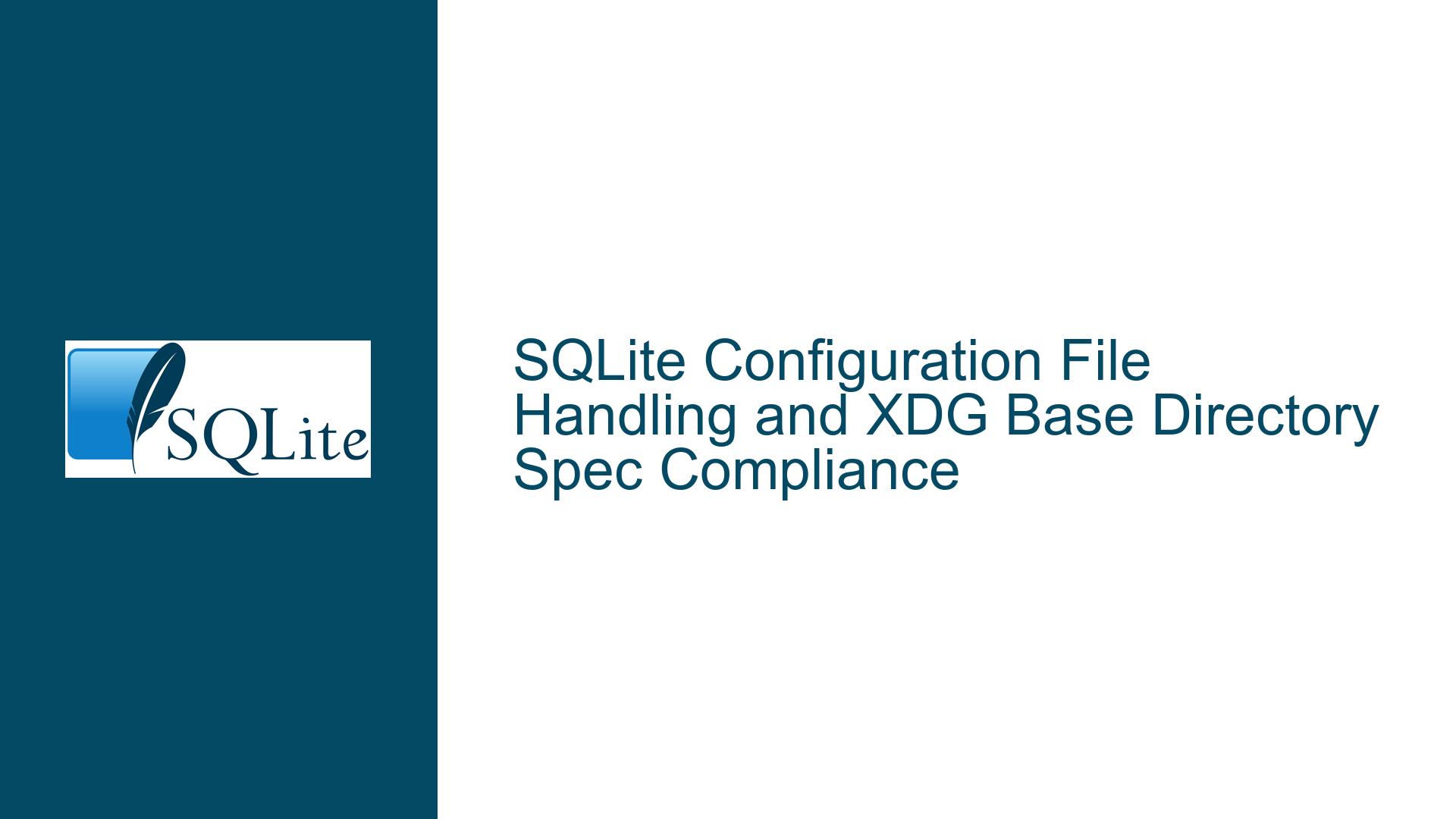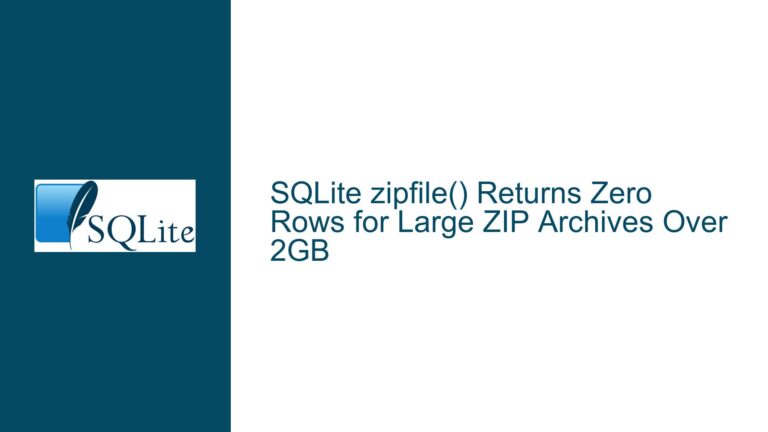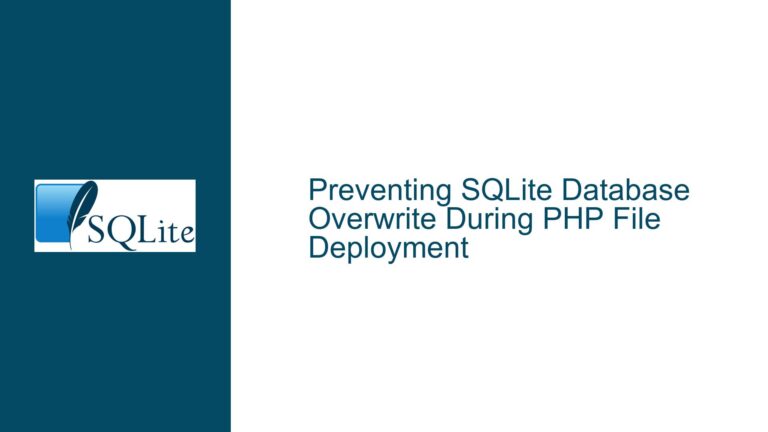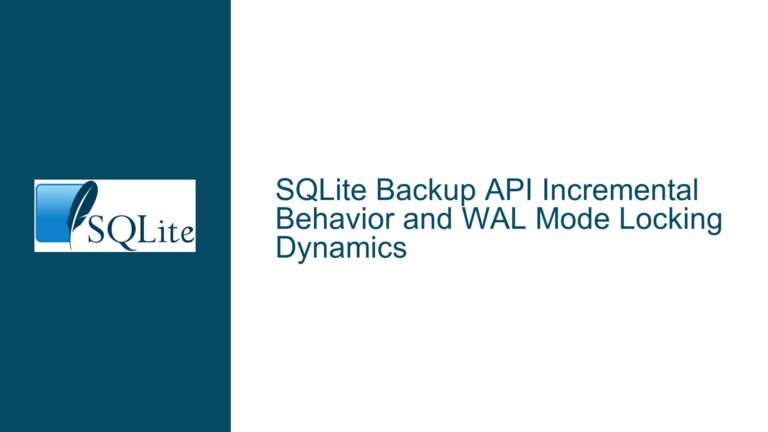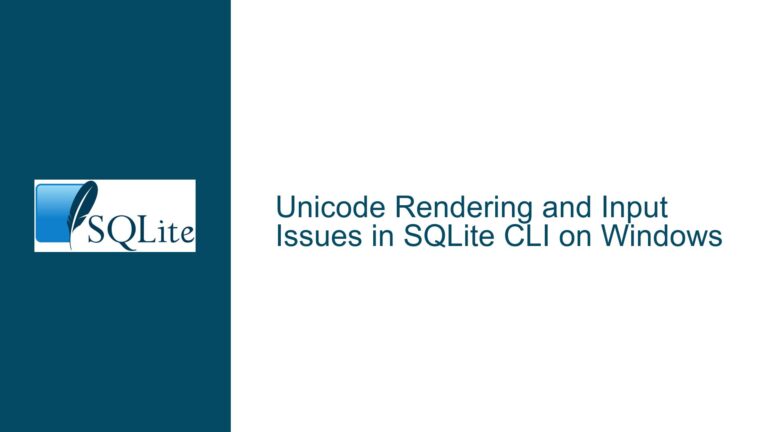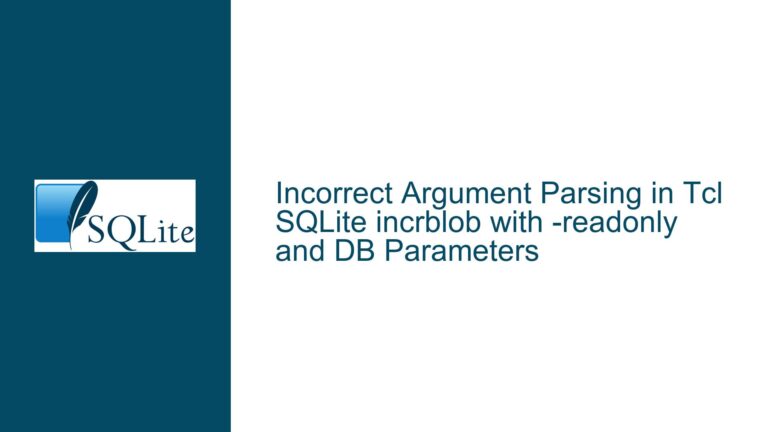SQLite Configuration File Handling and XDG Base Directory Spec Compliance
SQLite’s Configuration File Handling and the XDG Base Directory Specification
SQLite, a lightweight and widely-used database engine, provides a command-line interface (CLI) that allows users to interact with SQLite databases directly. One of the features of the SQLite CLI is the ability to read a configuration file at startup, which can be used to set user preferences such as output modes, headers, and other meta-commands. However, the way SQLite handles these configuration files has sparked a discussion about its compliance with the XDG Base Directory Specification, a widely-adopted standard for organizing user-specific configuration files on Unix-like systems.
The XDG Base Directory Specification defines a set of environment variables and default paths for storing user-specific configuration, cache, and data files. The primary goal of the specification is to provide a consistent and organized way to manage these files across different applications. The specification suggests that user-specific configuration files should be stored in $XDG_CONFIG_HOME, which defaults to $HOME/.config if not explicitly set. Additionally, it defines $XDG_CONFIG_DIRS as a colon-separated list of directories to search for system-wide configuration files, defaulting to /etc/xdg if not set.
SQLite’s current implementation of configuration file handling does not fully adhere to the XDG Base Directory Specification. While it does check for a configuration file at $XDG_CONFIG_HOME/sqlite3/sqliterc if the XDG_CONFIG_HOME environment variable is set, it does not fall back to $HOME/.config/sqlite3/sqliterc if XDG_CONFIG_HOME is unset or empty. This behavior has led to confusion among users who expect SQLite to follow the XDG specification more closely.
The Implications of SQLite’s Current Configuration File Handling
The current behavior of SQLite’s configuration file handling has several implications, particularly for users who are accustomed to the XDG Base Directory Specification. First, it creates inconsistency with other applications that follow the specification. Many modern applications on Unix-like systems adhere to the XDG specification, and users often expect a consistent experience across different tools. When SQLite does not follow the same conventions, it can lead to confusion and frustration, especially for users who have organized their configuration files according to the XDG guidelines.
Second, the current implementation can be seen as a missed opportunity for better organization and management of configuration files. The XDG specification promotes a clean separation of different types of files (configuration, cache, data, etc.), which can simplify tasks such as backup, synchronization, and version control. By not fully embracing the XDG specification, SQLite may be contributing to a more cluttered and less organized home directory for its users.
Third, the current behavior can lead to unexpected results for users who are unaware of the nuances of SQLite’s configuration file handling. For example, a user might create a configuration file at $HOME/.config/sqlite3/sqliterc, expecting it to be read by SQLite, only to find that it is ignored because the XDG_CONFIG_HOME environment variable is not set. This can be particularly frustrating for users who are trying to follow best practices for organizing their configuration files.
Resolving the Configuration File Handling Issue
To address the issues surrounding SQLite’s configuration file handling, several approaches can be considered. Each approach has its own trade-offs, and the best solution will depend on the specific needs and priorities of the SQLite user base.
One approach is to modify SQLite’s behavior to more closely align with the XDG Base Directory Specification. This would involve checking for a configuration file at $HOME/.config/sqlite3/sqliterc even if the XDG_CONFIG_HOME environment variable is not set. This change would bring SQLite in line with the expectations of users who are familiar with the XDG specification and would promote a more consistent and organized approach to configuration file management.
However, this approach is not without its challenges. One concern is that it could introduce complexity into SQLite’s configuration file handling logic. The XDG specification includes several environment variables and default paths, and fully implementing it could require significant changes to the way SQLite searches for and processes configuration files. Additionally, there is a risk of breaking existing workflows for users who rely on the current behavior.
Another approach is to deprecate the use of configuration files altogether and encourage users to use alternative methods for setting their preferences. For example, users could create shell aliases or wrapper scripts that invoke the SQLite CLI with the --init option to specify a configuration file. This approach would simplify SQLite’s codebase and reduce the potential for confusion, but it would also require users to change their existing workflows.
A third approach is to introduce a new environment variable, such as SQLITE_INIT_FILE, that allows users to explicitly specify the path to a configuration file. This would give users more control over how their preferences are set while avoiding the complexity of fully implementing the XDG specification. However, this approach would still require users to manually set the environment variable, which could be seen as an unnecessary burden.
Ultimately, the best solution will depend on the priorities of the SQLite development team and the needs of its users. If consistency with the XDG specification is a high priority, then modifying SQLite’s behavior to more closely align with the specification may be the best course of action. If simplicity and backward compatibility are more important, then deprecating configuration files or introducing a new environment variable may be more appropriate.
Conclusion
The handling of configuration files in SQLite is a complex issue that touches on broader questions of consistency, simplicity, and user expectations. While the current implementation works for many users, it does not fully align with the XDG Base Directory Specification, which has become a de facto standard for organizing configuration files on Unix-like systems. By carefully considering the trade-offs involved, the SQLite development team can make informed decisions about how to improve the handling of configuration files in a way that meets the needs of its diverse user base. Whether through closer alignment with the XDG specification, deprecation of configuration files, or the introduction of new mechanisms for setting preferences, there are several paths forward that can help ensure a better user experience for all.
